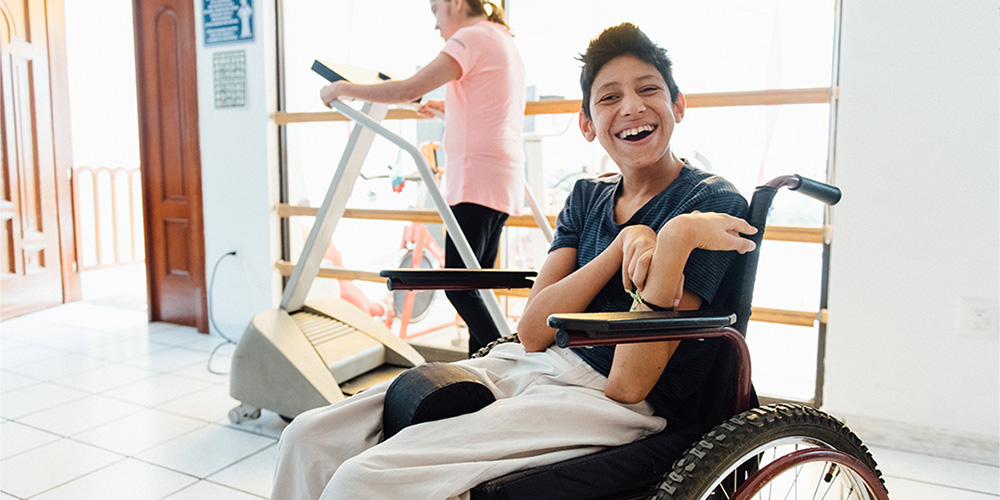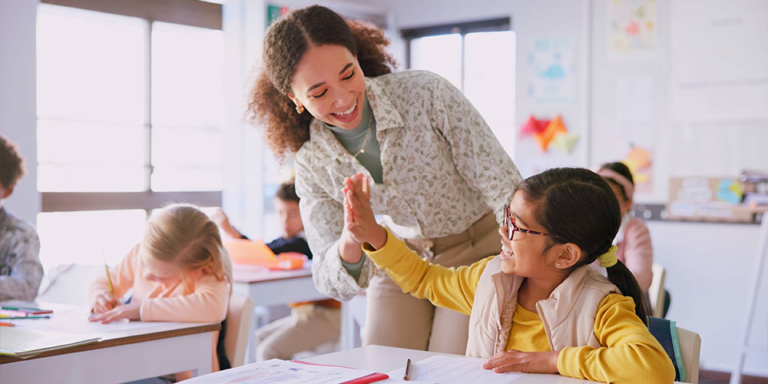Physical education is a crucial part of a child’s growth and well-being. That goes for every kid — including those with special needs — yet one physical education teacher can only do so much without the proper tools and resources.
When it comes to lesson planning for inclusion in PE class, the teachers we know have a number of adaptable games that ensure most every student gets to take part. While the classroom activities in this list will not provide exhaustive solutions for every physical and cognitive condition, we hope these resources provide a guiding light for greater inclusiveness.
Defining PE Inclusion for Students with Disabilities
Before we dive into inclusive physical education activities, it’s important to note how our country’s education system is faring in the mission. Let’s take a look at how we define inclusiveness and examine performance data.
Every child deserves an education that benefits them for the duration of their life. This truth remains a sacred contract between educators and the young people they seek to help. The promise doesn’t change based on a student’s socioeconomic status, learning differences, or physical handicaps.
The National Center on Health, Physical Activity and Disability defines inclusion as such: “All children, regardless of ability or disability, have the right to be respected and appreciated as valuable members of the school community, fully participate in all school activities, and interact with peers of all ability levels with opportunities to develop friendships.”
No one in their right mind would disagree with that statement, but for students with physical disabilities, inclusive physical education means evolving lesson plans and acquiring appropriate equipment with each new cohort of students. In other words, blanket proclamations provide a mission statement, but not necessarily a plan of action.
Unfortunately, public K–12 schools have a lot of catching up to do. Data from the Centers for Disease Control and Prevention highlight the need for inclusive lesson planning in PE classes.
- 76% of students with physical, cognitive, or medical conditions are not receiving the recommended hour of physical education per day.
- 55% of schools provide only traditional physical education.
- Only 26% of schools are able to provide both adapted and traditional physical education.
While these numbers reflect a dire situation, the stats don’t consider how a lack of funding and resources often makes inclusion a difficult task. We hope these games help PE teachers create a more inclusive gymnasium that adapts for students of all abilities and differences.
Games for PE Inclusion
There is so much to consider when lesson-planning for an inclusive PE class. Every student’s situation is completely unique, so games for PE inclusion will be different from class to class. It never hurts to reach out to a parent, special education teacher, or occupational therapist to help you brainstorm how to modify activities.
On that note, students’ level of ability will change with each passing year. Some things to consider are:
- The use of a wheelchair, cane, or walker
- Visual and hearing impairments
- Students who are nonverbal
- Children with sensory needs
- Kids with extreme social anxiety
To that end, TES Therapy suggests modification strategies such as:
- Changing the distance or time requirements of physical education activities
- Larger, softer, and lighter weight sports balls and bats for students who have limited motor skills
- Lowered tennis and volleyball nets for students who have limited motor skills
- Allowing for walking instead of running
With these complicated truths in mind, let’s take a look at some games for PE inclusion you might use in your class. While they cannot offer exhaustive solutions, we hope teachers can use these frameworks as adaptable lessons.
Free-form dancing: With free-form dancing’s emphasis on non-choreographed movement, almost every kid will be able to participate. Depending on their abilities, children can move their legs, arms, or even just their heads. There need not be an emphasis on the speed or vigorousness of movements so that all students can move according to their abilities.
Breathing exercises: While breathing itself doesn’t involve much exercise, mindfulness techniques enable students to listen to their bodies, which is very much a part of physical education. Breathing exercises can involve counting breaths as a group, or having students take deep breaths as they relax major muscle groups.
Chair aerobics: These activities allow for more students’ involvement. Depending on students’ abilities and limitations, chair aerobics might include alligator claps, swim arms, shoulder shrugs, leg lifts, flutter kicks, and marching in place.
Adjustable limbo: The rope height must be adjustable for kids who can’t bend down. If there are students who need accommodations, PE teachers can create a more inclusive environment by toning down any competitive or score-keeping elements.
Color matching: Give each student or group hoops of various colors. Place gym equipment that matches those colors at the opposite end of the gym. Ask students to retrieve an item that matches the color of their hoop. Kids who have physical limitations will be able to participate by identifying the location of the appropriate color.
Freeze: Put on music and ask your students to move or dance. When the music stops, they have to stop what they’re doing and stay in as perfect a tableau as possible.






